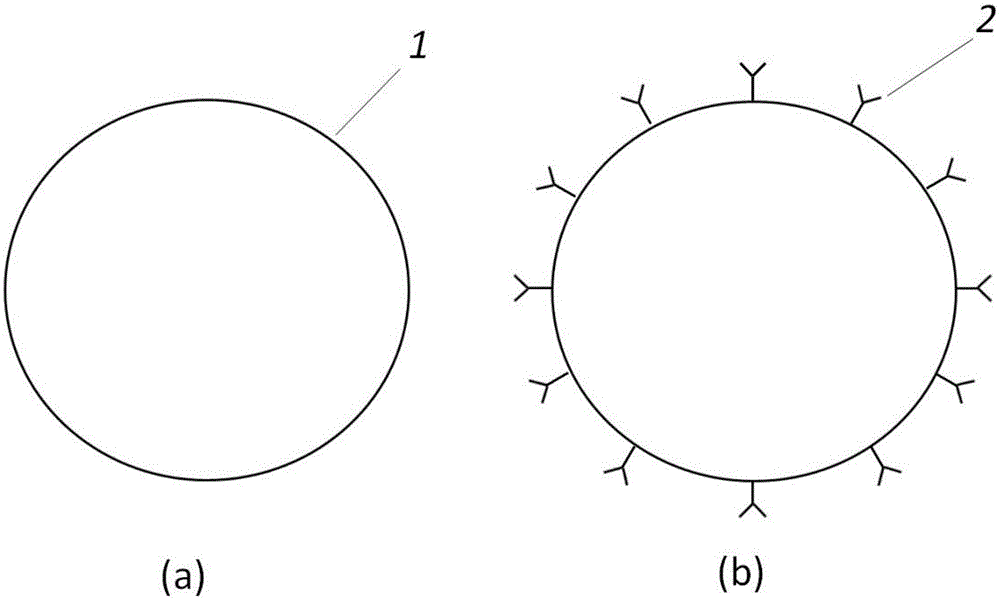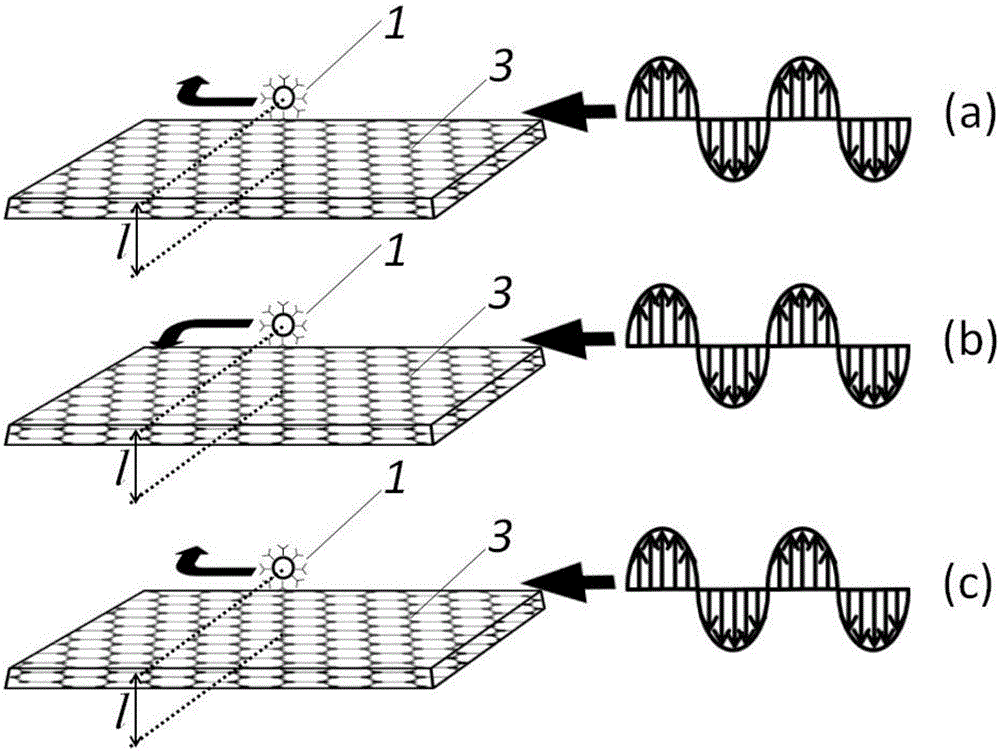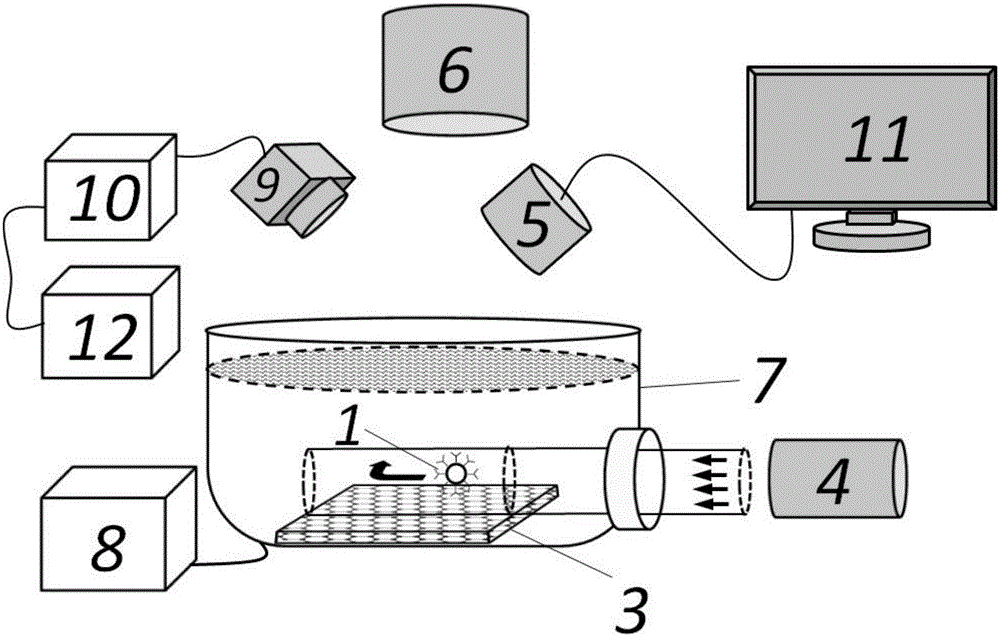Tunable capturing and screening method for particles on graphene substrate by means of linear polarization planar optical wave
A planar light wave and graphene technology, applied in the fields of medicine, nano-manipulation, and biology, can solve the problems of complex incident light source, difficulty in capturing, and non-tunable gradient optical force, etc., and achieve the effect of simple system and convenient operation
- Summary
- Abstract
- Description
- Claims
- Application Information
AI Technical Summary
Problems solved by technology
Method used
Image
Examples
Embodiment 1
[0021] First, microparticles 1 are produced by a material growth process, as shown in the attached figure 1 (a) shown. The geometric shape and size of particles can be determined by finite time domain difference method, finite element method and other algorithms.
[0022] Secondly, nanometer-sized molecules 2 are attached to the outer surface of the particle 1, such as attached figure 1 (b) shown.
[0023] Then, the particle 1 with nanometer-sized molecules 2 attached to the surface is placed above the surface of the graphene substrate plate 3, the distance is l (l>0), when the incident light is a linearly polarized plane wave and the graphene Fermi level is low ( Fermi level figure 2 (a) shown.
[0024] Afterwards, the Fermi level of graphene (Fermi level>0.1eV) is increased by increasing the external electric field, temperature, injection light intensity, topological material and the thickness of graphene, etc., so that the total Poynting vector on the surface of particl...
PUM
 Login to View More
Login to View More Abstract
Description
Claims
Application Information
 Login to View More
Login to View More - Generate Ideas
- Intellectual Property
- Life Sciences
- Materials
- Tech Scout
- Unparalleled Data Quality
- Higher Quality Content
- 60% Fewer Hallucinations
Browse by: Latest US Patents, China's latest patents, Technical Efficacy Thesaurus, Application Domain, Technology Topic, Popular Technical Reports.
© 2025 PatSnap. All rights reserved.Legal|Privacy policy|Modern Slavery Act Transparency Statement|Sitemap|About US| Contact US: help@patsnap.com



